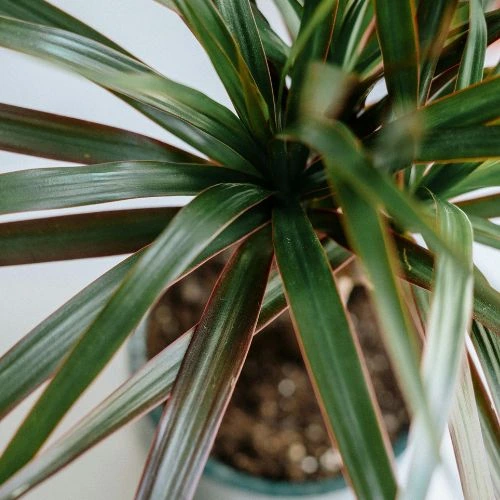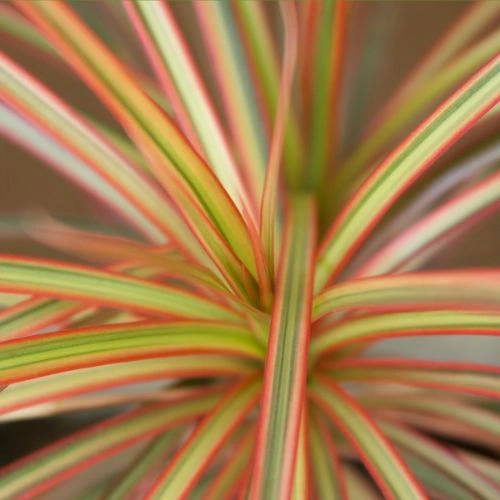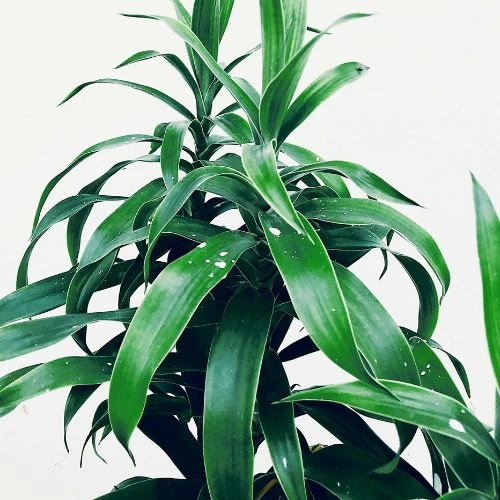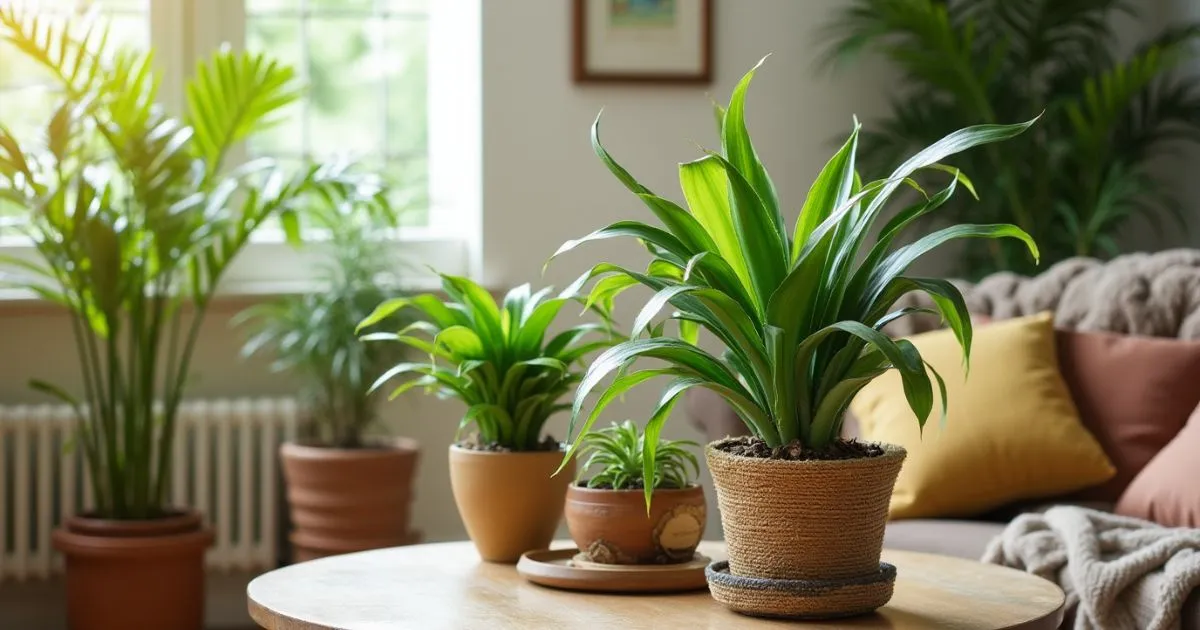In This Article
Dracaena plants are a popular choice among plant lovers, offering unique, stylish greenery that fits beautifully in any indoor space. Known for their dramatic foliage and resilience, Dracaenas are a top choice for both beginner and seasoned gardeners. With minimal care requirements, these plants thrive in indoor environments, making them an excellent pick for people looking to enjoy the beauty of nature without the need for constant attention.
Why Choose Dracaena for Indoor Gardening?
Dracaena plants offer several benefits, making them ideal for indoor spaces:
- Air Purification: Studies by NASA indicate that Dracaena plants can remove toxins from indoor air, creating a fresher, cleaner environment.
- Low Maintenance: These plants are hardy and can tolerate occasional neglect, which is perfect for busy households.
- Flexible Light Requirements: Dracaenas adapt to a wide range of lighting conditions, from bright indirect light to low light, making them versatile for various room settings.
- Modern Appeal: Their bold, often colorful leaves add a chic, modern touch that enhances any room decor.
Top Dracaena Varieties for Your Home



1. Dracaena Marginata (Madagascar Dragon Tree)
This elegant variety features narrow, arching leaves with red edges, creating a sophisticated look. Dracaena Marginata is a favorite for modern spaces due to its sleek profile and tolerance for low light.
2. Dracaena Fragrans (Corn Plant)
With broader leaves and a yellow central stripe, Dracaena Fragrans has a bushier look, ideal for larger spaces. Its sweet fragrance adds an extra appeal, especially during blooming.
3. Dracaena Reflexa (Song of India)
With green leaves and yellow margins, Dracaena Reflexa is small and dense . This variety is well-suited for tabletops and smaller spaces due to its size.
4. Dracaena Lemon Lime
This fast-growing plant has bold green and yellow-striped leaves, adding a refreshing pop of color to any room.
5. Dracaena Janet Craig
Known for its dark green, glossy leaves, Janet Craig thrives in low light, making it perfect for shaded areas or office settings.
Dracaena Care Guide: Essential Tips
Light Requirements
Dracaena Plants prefer bright, indirect sunlight but can also adapt to lower light levels, though growth may slow down in such conditions. Do not expose them to explicit sunlight as the leaves may wilt or even burn.
Watering Needs
Water your Dracaena only when the top inch of soil feels dry. Too much watering can cause root rot, therefore, it is advisable to allow the soil to dry a little before watering the plant again. If your plant’s leaves are turning yellow, it could be a sign of overwatering.
Soil and Potting
Use a well-draining potting mix with perlite or sand to enhance drainage. Dracaenas do best in slightly acidic soil. In order to avoid water accumulation, make sure the pot has drainage holes .
Temperature and Humidity
Dracaena Plants thrive in typical indoor temperatures (65-80°F) and moderate humidity levels. While they can tolerate lower humidity, misting the leaves occasionally can keep them healthy, especially in dry winter months.
Fertilizing Tips
Dracaena plants benefit from a balanced, water-soluble fertilizer applied once a month during the growing season (spring and summer). Do not apply fertilizer during autumn and winter as it is a period of slow growth for the plant.
Common Dracaena Problems and Solutions
Yellowing Leaves
Yellow leaves usually indicate overwatering or poor drainage. Make sure your pot has drainage holes and that the soil dries slightly between waterings.
Brown Leaf Tips
Fluoride in tap water or low humidity can cause brown leaf tips. Using filtered water and increasing humidity around the plant can help prevent this issue.
Drooping Leaves
Drooping often indicates under-watering or insufficient light. Change watering frequency as well, or even better move that plant to a brighter area so it gets more sunlight.
Pests
Dracaenas are generally resistant to pests; however, they can occasionally attract spider mites or scale insects. Use a damp cloth to clean the leaves and apply a gentle insecticidal soap if necessary.
Propagating Dracaena: Easy Steps for New Plants
Dracaenas are easy to propagate, making them ideal for anyone who wants to multiply their plant collection.
- Take a Cutting
Cut a 6-8 inch section of stem with at least one node (a small bump on the stem where roots can grow). - Root in Water or Soil
When roots develop after having placed the cutting in water, consider transplanting to soil. Alternatively, plant the cutting directly in soil with proper watering and light. - Care for New Growth
Keep the new cutting in a bright, warm spot and water it regularly. Ideally, new growth should be visible within the next few weeks.
Styling Tips: How to Decorate with Dracaena
Dracaena plants are both functional and decorative, making them easy to incorporate into home decor:
- Corners and Hallways: Dracaena varieties like Janet Craig or Corn Plant fill empty spaces elegantly.
- Living Rooms and Offices: Place your Dracaena Marginata or Lemon Lime near windows or under indirect light to add a modern touch.
- Tabletops: Smaller Dracaena Reflexa varieties are perfect for desks or tabletops, adding vibrant green color without taking up too much space.
- Grouping Plants Together: Dracaenas work well in clusters with other plants, creating a visually pleasing indoor garden that boosts air quality.
Seasonal Dracaena Care Tips
Dracaena plants require slight care adjustments during seasonal changes to maintain optimal health.
Spring and Summer
- Increase watering frequency as indoor temperatures rise.
- In order to support the plant’s growth, consider applying a balanced fertilizer once a month.
Fall and Winter
- Reduce watering, as plants typically need less moisture during cooler months.
- Mist the leaves if indoor air becomes too dry from heating systems.
Winter Dormancy
Dracaenas enter a dormant phase in winter, so avoid fertilizing and keep them in a stable temperature range. Provide indirect light to maintain health during this period.
Frequently Asked Questions
How often should I water my Dracaena?
Consider watering only if the dryness level of the top inch of soil is high. Depending on conditions, this could be every 1-2 weeks.
Can Dracaena plants grow in low light?
Yes, low light is tolerated, but Dracaena plants thrive in bright, indirect light.
Are Dracaena plants safe for pets?
No, Dracaenas are toxic to cats and dogs. Keep them out of reach if you have pets who like to nibble.
How long do Dracaena plants typically live?
With proper care, Dracaenas can live 10-15 years or more, making them a long-lasting addition to your indoor garden.
Why are the tips of my Dracaena turning brown?
Brown tips often result from fluoride in tap water or low humidity. Using filtered water and maintaining adequate humidity can help prevent this issue.
What kind of soil is best for Dracaena?
A well-draining potting mix with perlite or sand works best, as it provides the slight acidity and drainage Dracaenas prefer.
How can I propagate my Dracaena?
Cut a stem section with a node, root it in water or directly in soil, and care for it like a new plant.
How do I know when to repot my Dracaena?
If roots are visible through drainage holes or the plant seems crowded, it’s time to repot. Every 2-3 years is common.
Conclusion
Dracaena plants are easy to care for and valuable choice for any indoor garden. With benefits like air purification, attractive foliage, and a variety of types, Dracaenas can bring both beauty and health to your home. Whether you’re drawn to the dramatic Dracaena Marginata or prefer the lush Dracaena Fragrans, these plants are sure to enhance any room.
From choosing the perfect variety to styling tips and troubleshooting, caring for Dracaena plants is straightforward. With a little attention to light, watering, and seasonal adjustments, your Dracaena will thrive for years, offering you a natural touch of beauty and fresh air.

